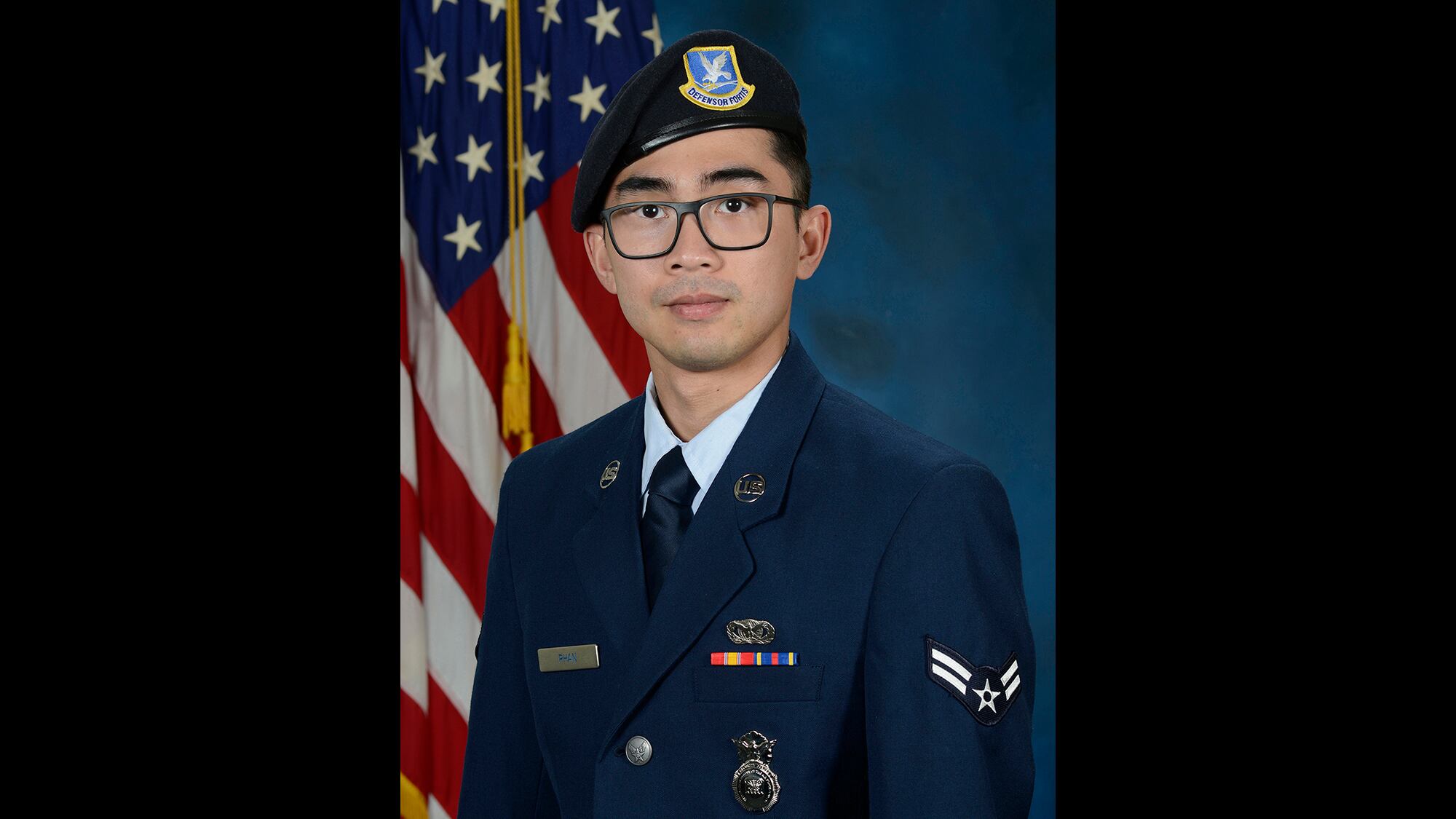A recent investigation into the all-terrain vehicle rollover that killed an American airman on patrol outside Ali Al Salem Air Base in Kuwait last fall found that none of the ATV’s occupants wore seatbelts, and only one door may have been locked as needed.
A series of delays also hindered the search-and-rescue effort for the trio of airmen who skidded out in the desert on Sept. 12, 2020, according to the accident investigation board report published April 5.
Security forces handed off the ATV to three airmen who were heading out around midnight for a 12-hour shift on a quiet night: Senior Airman Jason Khai Phan, a 26-year-old active-duty airman who died in the accident; a 25-year-old Air Force Reserve staff sergeant who drove the vehicle; and a 27-year-old active-duty Air Force senior airman who served as truck commander.
All three were assigned to the 386th Expeditionary Security Forces Squadron, part of the primary airlift and MQ-9 wing at the base. Phan, of Anaheim, Calif., was deployed overseas from the 66th Security Forces Squadron at Hanscom Air Force Base, Mass., according to the Air Force.
RELATED

Each was trained and certified to drive the Oshkosh Defense-built ATV, which appeared to be in good working condition when the security forces changed shifts that night.
The team was patrolling outside the base’s perimeter fence, an area known as “Viperland,” when the accident occurred around 9 a.m.
“The three airmen were traveling aboard the [Mine-Resistant Ambush-Protected ATV] on a hard-packed sand and rock road when the driver felt the vehicle pull to the right, as the right wheels appeared to be getting stuck in the sand,” Air Force Materiel Command said in an April 5 release accompanying the accident report.
The driver tried to veer left to compensate, but lost control as the ATV skidded. The ATV was going at least 43 miles per hour when it began to skid — more than double the speed limit in the desert — as an alarm light and tones sounded inside the truck. The speed limit on “improved” off-base roads is higher, at 62 mph, though witnesses told the Air Force they weren’t sure how fast they were supposed to be going on the road where the accident occurred.
The driver told others she thought the ATV’s brakes were malfunctioning as she lost control, according to the report, though investigators found the brakes were 100 percent efficient during the skid. The ATV rolled over once and came to rest on its side.
“During the rollover, the back door behind the [driver] opened, ejecting [Phan] and shearing the door off its hinges,” the report said. “None of the [team’s] members were wearing seatbelts or helmets, and the combat lock was not engaged on [Phan’s] door.”
The driver’s door may have been the only one that was combat-locked at the time, though troops are supposed to lock each door before an ATV begins moving to ensure its occupants are safe.
Phan landed on hard-packed sand up to five feet from the ATV and suffered “immediate fatal injuries,” the report said.
Once the ATV came to a stop, the commander helped the driver out and determined Phan was fatally hurt. Emergency medical services responded to the scene after a rocky handoff from the Base Defense Operations Center, which used terms to describe the incident that EMS didn’t understand. Once dispatched through the 911 system instead, medics were not given details of the accident or told they were headed for a casualty, the report said.
“The ambulance initially followed a security forces pickup truck out to the scene,” though the two vehicles could not communicate through their radios, according to the report.
“The ambulance, unsuited for traveling over the unimproved roads on the way to the mishap site, got stuck on a sand dune, and could not make the trip,” the report said. “The medics took their necessary gear and equipment out of the ambulance and transferred into their guide vehicle, who took them out to the scene.”
Phan was pronounced dead around 10:30 a.m. and his body was recovered by mortuary affairs specialists. The vehicle’s driver was “medically unstable” at the time as well, and required evacuation to the Army’s regional medical facility at Camp Arifjan. The driver and commander have since recovered from “lacerations, mild [traumatic brain injuries] and bruising,” the report said.
RELATED

There’s no indication that maintenance contractors ManTech International, SAIC, and other local companies contributed to the accident, the report said. There were no overdue or incomplete repair tasks for that vehicle at the time, and it was up to date on all scheduled inspections.
The report noted that security forces typically patrolled “Viperland” in Toyota Hilux pickup trucks until the weeks leading up to the mishap, when unit leadership directed the use of more ATVs “due to local threats” and vehicle availability.
It was the driver and truck commander’s first shift in an ATV, according to the report. The investigation noted that while drivers were trained, the squadron did not have enough sufficiently trained airmen to work 12-hour shifts three days in a row. The report also raised a lack of experience among newly trained ATV operators and other training shortfalls, in part because of the coronavirus pandemic.
“It is a tragedy anytime we lose an airman, and this accident highlights the dangers our members who serve face daily in the defense of our nation. Our thoughts and prayers go out to Senior Airman Phan’s family and friends,” said Maj. Gen. Maureen Banavige, president of the ground accident investigation board that oversaw the report.
Rachel Cohen is the editor of Air Force Times. She joined the publication as its senior reporter in March 2021. Her work has appeared in the Washington Post, the Frederick News-Post (Md.), Air and Space Forces Magazine, Inside Defense, Inside Health Policy and elsewhere.




